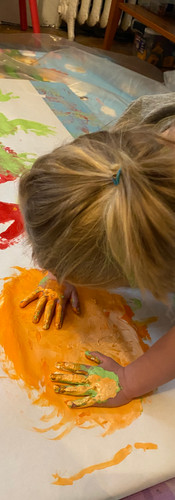
Many of us autism grandparents who don’t live with our autistic grandchildren send them things through the mail from time to time. JC and I take care of our 4-year-old granddaughter Angelina a few days/nights every week while her mother (our daughter, Kelly) is working long shifts as a nurse at a large urban hospital.
Even though we see Angelina a lot, we also send her “letters” through the mail. And the types of letters that we send might stimulate ideas for “letters” that other grandparents can send to their autistic grandchildren.
Each of our letters consists of a photograph taped onto a sheet of notebook paper and accompanied by three questions. Each photo has me and/or JC in it, and sometimes Angelina too. Each of the three questions relates to the photo. Here is an example of a group of three questions: “Who is in this picture?” “What are they doing?” “Are they happy or sad or angry or surprised?”
We send each letter in an envelope that’s addressed to Angelina and that has her photo taped on it next to her name/address. And we’ve given Kelly a three-ring binder for the letters.
It is our hope that our letters are accomplishing the following six things.
Helping Angelina understand what “mail” is.
Giving Angelina an at-her-home happy reminder of her grandparents. (She likes/loves JC and me a lot and always wants to be with us.)
Causing Angelina to think and determine answers to questions.
Helping Angelina start to read.
Enabling Angelina and Kelly to have an enjoyable learning session together.
Providing an ever-growing hard-copy archive of annotated photos of JC and me that she can enjoy and continually learn from (and one day remember us by).
We send Angelina at least one of these letters each week. And the three questions on each letter are progressively more challenging as Angelina’s cognitive skills increase.
If you send letters to your autistic grandchildren, I’d love for you to share your methods and goals in the comments below, or on the Forum section of this website.








